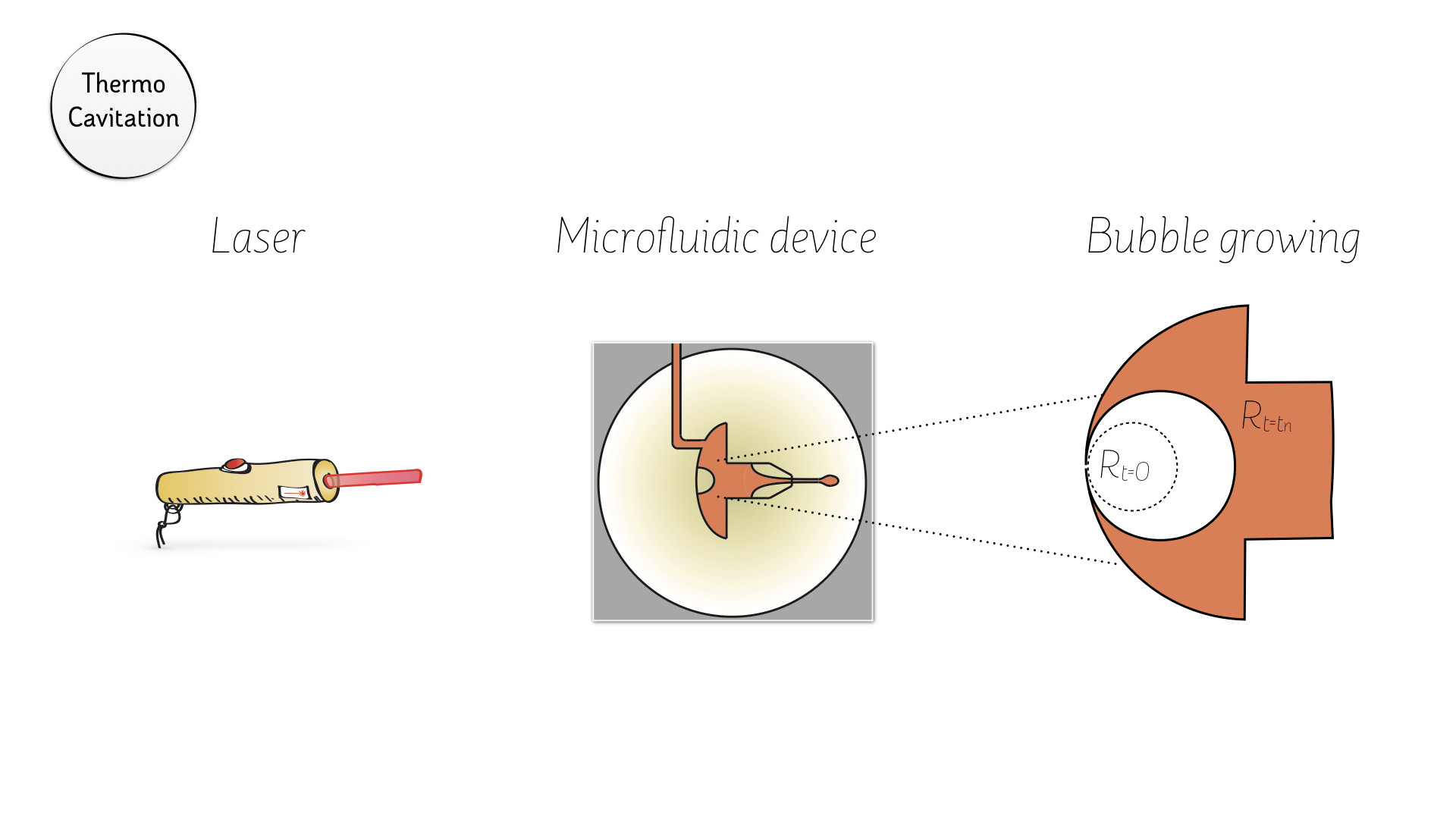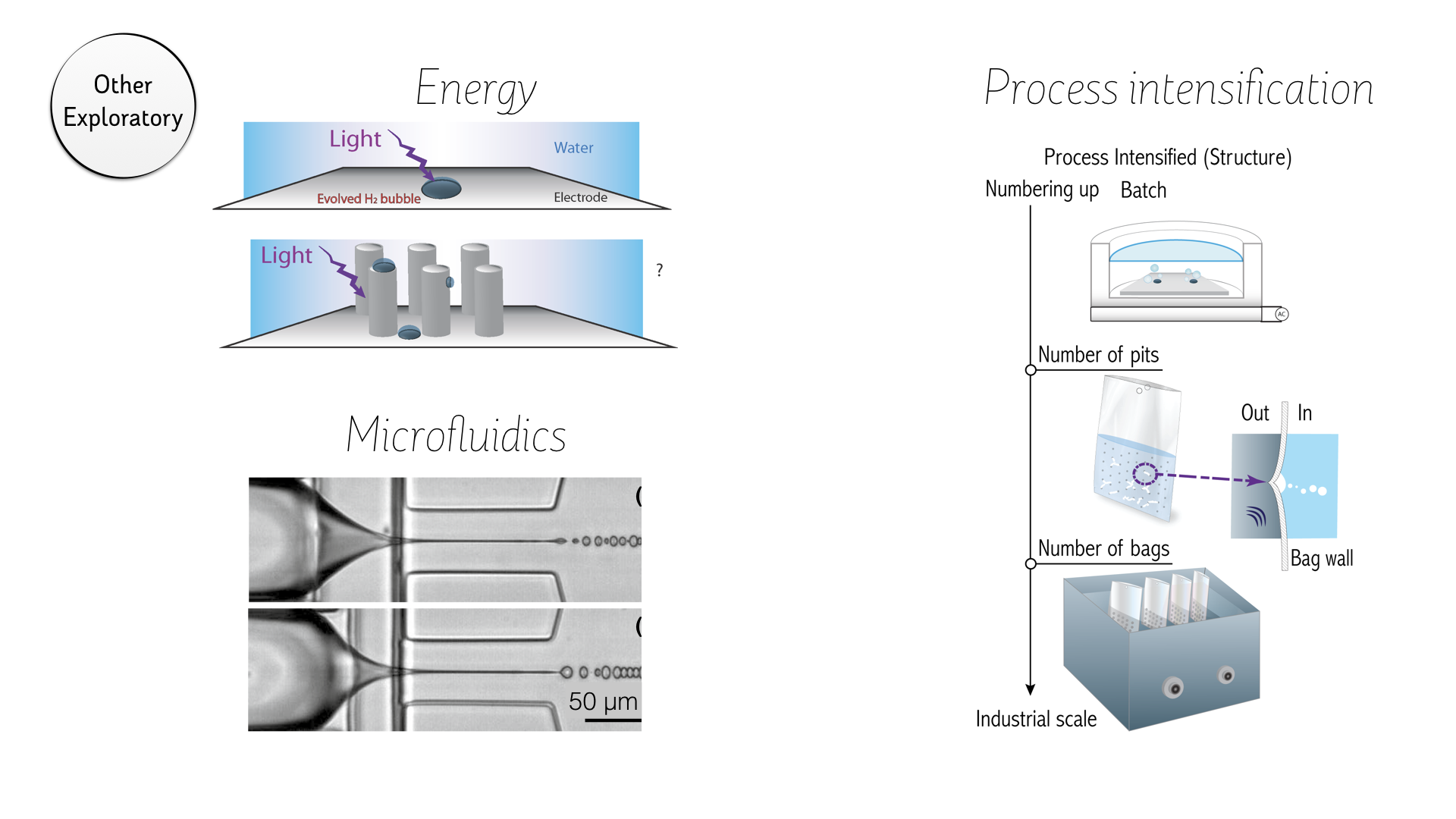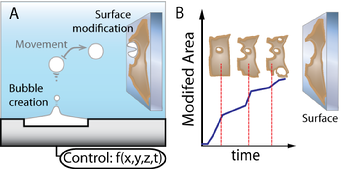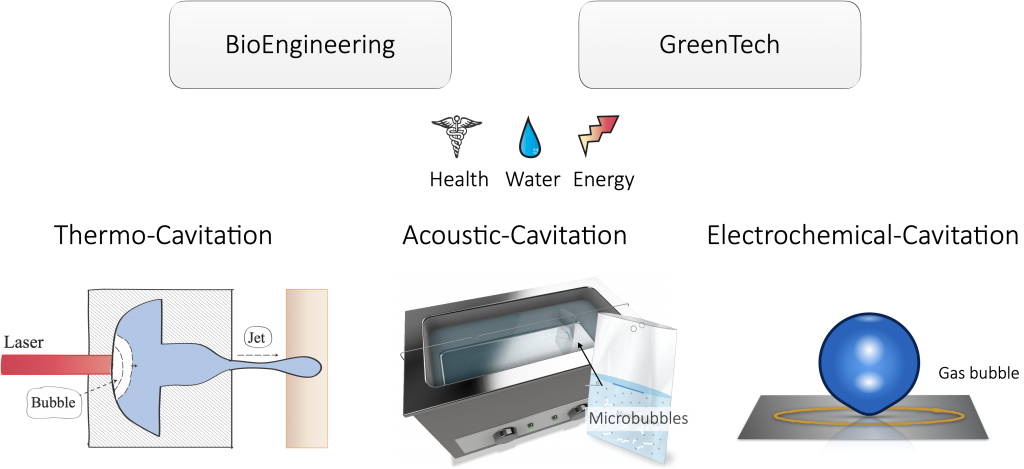
Thermocavitation
Our interest is to develop needle-free methods for liquid jet injection using microfluidic devices and thermocavitation, with relatively low laser energy and low cost of fabrication for an injection device. The first results can be seen here.
Related links:
- Visiting scientist at MIT.
- Receiving a prestigious prize from the Koninklijke Hollandsche Maatschappij der Wetenschappen.
- Berrospe-Rodriguez, Carla and Visser, Claas Willem and Schlautmann, Stefan and Ramos-Garcia, Ruben and Fernandez Rivas, David (2016) Continuous-wave laser generated jets for needle free applications. Biomicrofluidics, 10 . ISSN 1932-1058.

Energy
The generation of Hydrogen powered by sunlight and using water is an ideal example of zero-emission energy technology.
Our work in this direction covers the fundamentals of hydrogen evolution on functionalized electrodes and the design and construction of microfluidic devices prototypes that can be scaled up in a not so far future.
Related links:
- Modestino, Miquel A. and Fernandez Rivas, David and Hashemi, Seyyed Mohammad Hosseini and Gardeniers, Han and Psaltis, Demetri (2016) The potential for microfluidics in electrochemical energy systems. Energy & environmental science, 9 . 3381 – 3391. ISSN 1754-5692.
- Organized event Pathways to Solar Energy Technologies at the Lorentz Center.
- Netherlands Center for Multiscale Catalytic Energy Conversion.
Microfluidics
I currently collaborate with other colleagues in the design and fabrication of microfluidic devices for the generation of mono disperse droplets, and other useful applications. One example of this collaboration can be seen here.
Related links:
- Castro-Hernandez, Elena and Kok, Maarten P. and Versluis, Michel and Fernandez Rivas, David (2016) Study of the geometry in a 3D flow-focusing device. Microfluidics and nanofluidics, 20 (40). 40 -. ISSN 1613-4982
- Narezo Guzman, Daniela and Xie, Yanbo and Chen, Songyue and Fernandez Rivas, David and Sun, Chao and Lohse, Detlef and Ahlers, Guenter (2016) Heat-flux enhancement by vapour-bubble nucleation in Rayleigh-Bénard turbulence. Journal of fluid mechanics, 787 . pp. 331-366. ISSN 0022-1120
Process intensification
Directly connected to innovation and most areas of my research and teaching activities.
Related links:
- Fernandez Rivas, David and Kuhn, Simon (2016) Synergy of Microfluidics and Ultrasound: Process Intensification Challenges and Opportunities. Topics in current chemistry, 374 (70). ISSN 0340-1022.
- MSc Course Process Intensification Principles.

Sonochemistry & Cleaning
WHAT?
I want to control better the growth and collapse of a bubble, known as cavitation.
Bubbles collapsing near surfaces can modify surface properties, which has applications of scientific and economical relevance.
Related links:
- Fernandez Rivas, David and Prosperetti, Andrea and Zijlstra, Aaldert G. and Lohse, Detlef and Gardeniers, Han J.G.E. (2010) Efficient Sonochemistry through Microbubbles Generated with Micromachined Surfaces. Angewandte Chemie, International Edition in English, 49 (50). pp. 9699-9701. ISSN 0570-0833
- Verhaagen, Bram and Fernandez Rivas, David (2016) Measuring cavitation and its cleaning effect. Ultrasonics sonochemistry, 29 . 619 – 628. ISSN 1350-4177
WHY?
Bubbles can be used for cleaning of 3D printed parts, medical tools, or other important applications such as cell manipulation, and water treatment (see Sonochemistry).
CAN BUBBLES CLEAN?
HOW?
A short story about ultrasonic cavitation:
KNOWLEDGE TRANSFORMED INTO A COMMERCIAL PRODUCT?
The BuBle Bag is a good example of knowledge valorisation, with more than 10,000 sold!
The uses of ultrasound in chemistry cover several applications such as degradation of contaminants in water treatment, nanomaterials synthesis, and the food industry.
I want to innovate in the Sonochemistry activities with microfabrication and microfluidic techniques.
